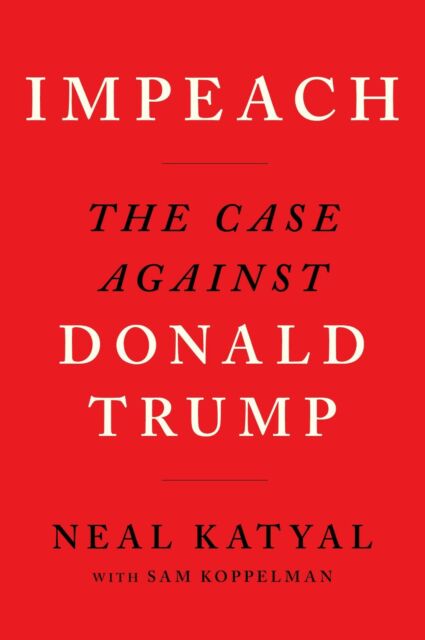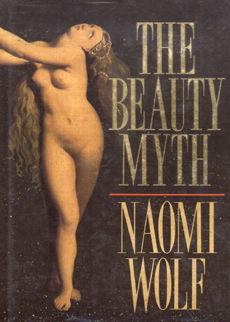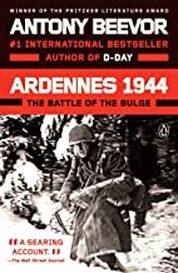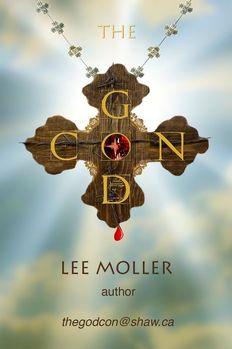 This book was banged out in two weeks and published just before Trump was actually impeached. In this case, I think the word "impeach" really means "impeach and convict (i.e.: remove from office)". It is remarkably current considering the pace of events. Katyal is a regular on MSNBC and worked in the Obama Whitehouse. He is a Constitutional scholar and Professor of Constitutional Law. The book is a quick read. The writing is concise and clear. He outlines the history of impeachment first. He then examines the evidence, and the case against DJT. The legal issues are well explained . He finds himself teaching the American people law in the usual way: establish a set of hypothetical circumstances, and then explore the legal consequences. Except this time, the circumstances are real, and USA is dealing with a bizzaro hypothetical come to life. Finally, he offers up some legislative patches that might make it harder for the next out-of-control President to follow in DJT's footprints. The Whistler-Blower's statement is in it in full. It was compelling reading. The WB really did his homework well. Katyal lays out the case why DJT must be removed from office very convincingly. I could go through the long list of things that Trump has done, but they are well known and there is no point in my summarizing a summary. The book is not expensive and is out in paperback. Read it for yourself.
0 Comments
 I really liked the film series of the same name that documented the experiences of Easy Company of the 101st Airborne. The book 's chapters each correspond to a 1 hour piece of the film series. I re-watched the series as I read the book. Easy was trained by a much hated Captain Sobel. But Sobel's strict emphasis on fitness made Easy the most fit unit in the ETO (European Theater of Operations). Easy landed at Normandy, fought through Holland and Belgium, participated in Operation Market Garden, and famously played a key role in defending Bastogne from the German onslaught during The Battle of the Bulge. The book is an easy read. It is about as close to fiction as I read these days, but of course, it is not fiction. The attention to military detail was fantastic in the film. I spotted things that were referred to in the book, but never pointed out in the film. So unless you were there, or were a veteran of other battles, the film had aspects that you would never notice without reading the book. Having said that, the film viewing time is longer than the book reading time. So if you have seen the film, you have not missed much. In fact, for most people, you can read the book faster than you can watch the show. What these men had to endure is beyond anything I will ever experience. I stand in awe of what they accomplished… beyond simple survival. The film ends with interviews of some of the soldiers… now quite old. The paradox of war is in the title. When you arrive as a recruit, you and your mates are equals, regardless of background. And if you survive the whole affair, they are your best friends to whom you owe your life, and vice versa. All of the survivors are glad for the experience, but only with the after the fact knowledge that they make it. Regardless, the emotional ties are strong and very touching. The cliché "blood is thicker than water" does not refer to kinship ties, but to spilt blood between soldiers.  This was a read of a different nature. I wanted to learn a little more about feminism and a friend recommended this and one other book. It is different for me because it views the world from a perspective that I might try to empathize with, but cannot experience. It is worth noting that the book is 30 years old now, and some things have changed. I also note that Ms Wolf is very "beautiful", or at least she was in 1990. How much beauty-bias she personally suffered is hard to say. The book has six chapters: Work, Religion, Culture, Violence, Sex, and Hunger, There are many examples in every chapter (too many at times) of the various burdens women must bear… some external and some internal. For example: the intro points out that the average American woman would rather loose 10-15 lbs than any other goal. That is really sad. It certainly has a strong external component to it. You can blame Twiggy et al for that, but surely part of this issue is internal. She introduces the concept of the PBQ (Professional Beauty Qualification). She argues that the PBQ is a way to discriminate against women in a safe, litigation-proof way. The standards for on-air female personalities are quite different than for men. One woman lost a case where her employer said she was too, old, too unattractive, and not deferential enough to men. Yikes! The PBQ, Wolf argues, is the currency of womanhood. Here is a shocking statement from the book: Young professional women spend up to 1/3 of their income on their appearance. Or to put it slightly cruder: Want to keep your job: get your boobs done. Culture obviously has shaped women. Women's culture is driven by women's magazines and the advertisers who support them. The advertisers are constantly telling women how they should or could look, and assure them that if they buy their goop, all their woes will go away. In fact they create the woes first, and then fix them. And they deliberately promote competition between women. The author suggests that "adornment" is a huge part of female culture, and I am sure she is right. But I wonder if that aspect of female culture is not part of the problem. Putting such a heavy emphasis on adornment seems rather shallow to me, but I am a guy. Women and weight is always an issue. Weight Watchers tells women "Always wear your makeup. Even to walk the dog. You never know whom you are going to meet." That says a lot. About appearance issues and weight. The author's Religion chapter focuses primarily on the cult aspects of beauty and make-up. She spends quite a bit of time focusing on the bullshit of skin creams that promise rejuvenation. One marketing line caught my eye: "A lipstick you can have a lasting relationship with." I wonder if it comes with batteries. Cults are something I know a little about. And it is all (well, most of it) there. Chanting, purifications, confessions and other mind control techniques are on full display. If the woman is also hungry, that helps as it will impair her reasoning. Sex will always be an issue. And men control the issue. The book cites several cases where women were raped or brutalized, only to have the legal system tut-tut them, or suggest it was all in good fun. Who can forget the Canadian judge who asked a female victim why she didn't just keep her knees together? Ms Wolf does not approve of pornography and she may have a point, but these are issues that can be resolved academically, which is my only real complaint about this book… It could have used more science to back up its conclusions. There is no doubt that weight and conditions like bulimia and anorexia are major concerns for women. The author quotes a number of statistics on the subject. If one takes the worst numbers that have been put forward, then 1 in 10 college age women are anorexic and 5 more are bulimic. If the true figures are even close to that, that is very troubling indeed. The rail thin heroin-chic skinny look came in with Twiggie and has never left. Porn and women's magazines are part of the problem, to be sure. They both make people of both sexes feel that their bodies are not as good as they could be. Cosmetic surgeries have gone through the roof. Joan Rivers had more and more done until the last one killed her. The author argues that this is a form of violence toward women, and it is hard to argue that she has a point. Doctors invade diseased bodies as a last resort. Cosmetic surgeons call healthy bodies sick and then invade them. The industry is huge and largely unregulated. Things may have changed in 30 years, but in 1990, doctors could not tell a patients the risks of cosmetic surgery because they did not know themselves. I found the book over-long on examples, and short on analysis and statistics. But these are quibbles. I can say this: it is more complicated being a woman in our society than a man. We have a long way to go as a society to level the playing field. And women (and men) need to learn how to be happy with themselves and others. I recently visited my sister-in-law and complemented her on her looks. I had caught her in a rare moment: au natural (no makeup). She thought I was ribbing her. That should not happen.  There is no WWII battle more famous than the Battle of the Bulge. It was more widely referred to initially as the Ardennes Offensive. The German code name for it was Watch on the Rhine. To put the battle in context: D-Day has come and gone; The Netherlands have been liberated and Antwerp captured; Operation Market Garden, and Montgomery's pet project, was a spectacular failure. As the allies approached Germany, resistance grew. But Market Garden was not Monty's biggest failure. Antwerp was. Monty took Antwerp and then turned his eyes East. He failed to liberate the north side of the Schelt, the long inlet that gives Antwerp access to the sea. It was up to the Canadian's to clear the Schelt, which they did at great cost, giving the allies their first really useful port. Antwerp was the target of the Ardennes Offensive. Here are the player: At the top: Churchill; Roosevelt, Hitler, DeGaulle (a general pain in the ass) and Stalin. Below Roosevelt was Eisenhower and under him Montgomery, Patton, and Bradley who was in over-all charge on the ground. In the East: Manteuffel, Model, Sepp Dietrich, and most famously, Pieper of the Waffen SS) . The SS, originally Hitler's body guard, had grown and become an army of itself: the Waffen SS (weaponized SS) . They were famously lead by Pieper, a fanatical Nazi (Pieper survived the war, spent 11+ years in jail; and retired until the French Resistance caught up with him 20 years later and killed him) led the best equipped Panzer division in the battle. Eisenhower ran the overall show. He has three squabbling generals to deal with. Montgomery was a ass, who thought only of British and personal glory. Montgomery would push for certain tactics, sometimes with good reason, but always prefaced every suggestion with "Put me in charge". Patton was famously arrogant and head strong. And Bradley was a wimp. Bradley did not figure much in the battle because he had head-quartered himself in Luxembourg and was out of touch with events. Bradley felt scapegoated because he was the one who thought that no offence could come from the Ardennes. But it did come. The book was an engrossing read. The horrors of war come through strongly. A minor example: US dead soldiers were booby trapped by fleeing Germans. Death was everywhere. Everyone knows the final outcome of the most costly battle in US history. If you have seen the movie, you are probably aware of the Massacre at Malmedy. In it, Peiper's men shot 84 US POWs in a field. In point of fact, the Germans shot just about everyone: POWs, locals thought to be in touch with the resistance, locals in general, and occasionally, each other. But Malmedy was big news and the American division that saw it returned the favor in kind. In one incident, twenty German's were under fire and decided surrender under a white flag. The American's waved the first man out, and then the rest followed. When the Germans were all out and exposed, the senior American gave the command, and they were all machine gunned. This had one positive effect: The German's would do almost anything to avoid having to surrender to that American division. A military side note: the deadliest weapon in the battle field of Europe was not the tank or the machine gun, or artillery. It was the humble mortar. Prior to the war's beginning, high frequency electronics was just getting off the ground. Television was introduced during the 1936 Olympics. Another development linked to television was not for public consumption; became England's secret weapon; and played a role in the Battle of the Bulge. Perhaps the best kept secret weapon of the battle was Pozit. It is better known today as a ground proximity fuse. Since artillery was invented, gunners knew that a shell that exploded overhead was far, far more deadly that one that augers into the ground and explodes. It was possible to do this without Pozit, but it was tricky at best. Pozit used a small single purpose radar signal to detect the ground approaching and trigger the explosion, typically about 30 feet above ground. It worked every time. One well place shell could kill everyone on a 100 meter radius that was not protected. Pozit had a very large effect on German morale as well as battle field outcomes. Another short remark about Montgomery: he was so pig-headed about getting overall ground command in the European theatre (which would never, ever happen… the Americans would never allow it) that he came within a word or two of losing his job. He railed against Eisenhower to an aide who had just come from Ike. The aide said Ike might replace him. "Replace me with who?!" asked Monty. The aide mentioned a name. Monty shut up, apologized as only a Brit can, and resigned himself to history. The index in weak in this book, but otherwise a really educational and sobering read. |
AuthorLee Moller is a life-long skeptic and atheist and the author of The God Con. Archives
May 2024
Categories
All
|

 RSS Feed
RSS Feed